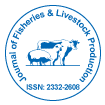Notre groupe organise plus de 3 000 séries de conférences Événements chaque année aux États-Unis, en Europe et en Europe. Asie avec le soutien de 1 000 autres Sociétés scientifiques et publie plus de 700 Open Access Revues qui contiennent plus de 50 000 personnalités éminentes, des scientifiques réputés en tant que membres du comité de rédaction.
Les revues en libre accès gagnent plus de lecteurs et de citations
700 revues et 15 000 000 de lecteurs Chaque revue attire plus de 25 000 lecteurs
Indexé dans
- Index Copernic
- Google Scholar
- Sherpa Roméo
- Ouvrir la porte J
- Clés académiques
- Bibliothèque de revues électroniques
- Recherche de référence
- Répertoire d’indexation des revues de recherche (DRJI)
- Université Hamdard
- EBSCO AZ
- OCLC-WorldCat
- Direction des chercheurs
- Catalogue en ligne SWB
- Bibliothèque virtuelle de biologie (vifabio)
- Publons
- Euro Pub
- Université de Cardiff
Liens utiles
Revues en libre accès
Partager cette page
Abstrait
Livestock Feed, Feed Balance and Chemical Composition of Major Livestock Feeds in South Ari District South-Western Ethiopia
Denbela Hidosa
The lack of adequate information on livestock feed basis, feed balance, and quality parameters of major feeds is a critical livestock production constraint in the South Ari district. This study was conducted to identify the livestock feed basis, feed balance, and quality parameters of major feeds. Two Kebeles from the South Ari district were selected based on the local experience in livestock feed production and potential availability of diversified livestock feeds. One focus group discussion (FGD) per Kebele, which comprised 25 livestock keepers, was established with the aid of Kebele experts and local administrative bodies. The respondents were asked about the major livestock feed bases, livestock feed categories, and purpose of feeding values. After conducting FGDs, all FGDs members collected samples of major livestock feed that were listed during the FGDs and the samples were quantified for quality parameters. The results from the present study elucidated that there were 20 herbaceous and 16 browse forage species identified as livestock feeds. The estimated total dry matter required for livestock species per year was 857, 307 tons and produced was 115, 857.6 tons per year. The feed balance calculation showed that total deficits of 789, 427.9 tons of dry matter per year. The ash and crude protein contents of herbaceous species ranged from 38.6-315g kg-1, DM to 44.3-224.5g kg-1, DM, respectively, while they ranged from 97-330g kg-1, DM to 104-222 g kg-1, DM for browse species. Based on results from this study it was suggested that the primary emphasis is need to be improving the livestock feed basis through introducing productive improved forage species, improving poor quality-feeds and enhancing the utilization of indigenous forage species as protein supplements.
Revues par sujet
- Agriculture et Aquaculture
- Biochimie
- Chimie
- Food & Nutrition
- Génétique et biologie moléculaire
- Géologie et sciences de la Terre
- Immunologie et microbiologie
- Ingénierie
- La science des matériaux
- Le physique
- Science générale
- Sciences cliniques
- Sciences environnementales
- Sciences médicales
- Sciences pharmaceutiques
- Sciences sociales et politiques
- Sciences vétérinaires
- Soins infirmiers et soins de santé
Revues cliniques et médicales
- Allaitement
- Anesthésiologie
- Biologie moléculaire
- Cardiologie
- Chirurgie
- Dentisterie
- Dermatologie
- Diabète et endocrinologie
- Gastro-entérologie
- Immunologie
- La génétique
- Maladies infectieuses
- Médecine
- Microbiologie
- Neurologie
- Oncologie
- Ophtalmologie
- Pédiatrie
- Recherche clinique
- Soins de santé
- Toxicologie

 English
English  Spanish
Spanish  Chinese
Chinese  Russian
Russian  German
German  Japanese
Japanese  Portuguese
Portuguese  Hindi
Hindi